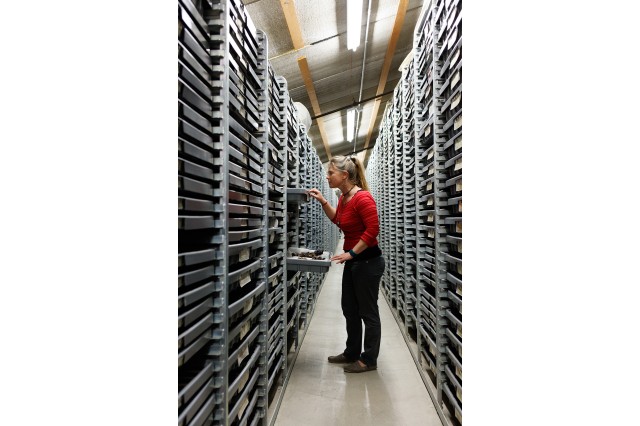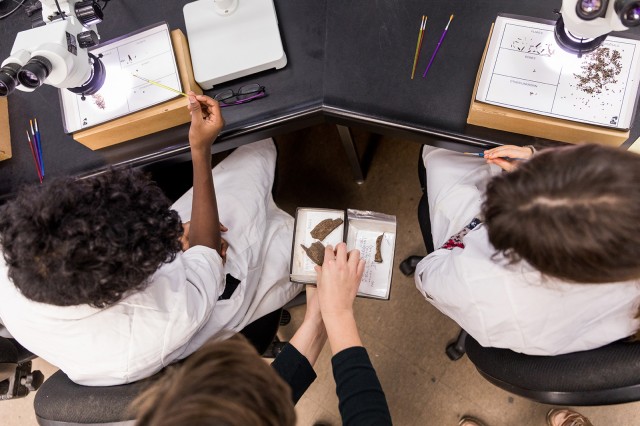General Info
Free with museum admission
Free to Members
Paleontology in Action
The Fossil Lab is an active paleontological laboratory inside the museum. Watch volunteers and scientists clean and conserve the fossils that we discover in the Tar Pits. These remains of plants and animals from the past 50,000 years show us how wildlife changes as climate changes. Paleontologists are now working on specimens from Project 23, the treasure trove of fossils that was discovered during the construction of a LACMA parking lot in 2006!
How To Prepare a Fossil
When a specimen arrives in the Fossil Lab, the first step in its preparation is removing the asphalt, a highly viscous or gooey, black, tar-like substance. Hardened asphalt is carefully removed by soaking the bones in a solvent (n-propyl bromide) overnight. A second cleaning process removes any residual clay and silt using water and foam tip applicators. Larger fossils, and fossils with many cavities such as skulls and vertebrae, can sometimes take several days to clean completely. Every fossil dug up from the Tar Pits has a characteristic brown hue as a lasting stain from the asphalt.
Sometimes specimens can become damaged or cracked during the fossilization process. In the Fossil Lab the team can repair or reconstruct the bone using a transparent, glue-like adhesive (Paraloid B-72). After each bone is cleaned, and repaired if necessary, it is then transferred to our collections team.
Microfossil Sorting
Microfossils are tiny fossils less than 1 cm in size, such as small skeletal remains, teeth, bones, plants, insects, shells, and more. They are found in the matrix (sediment) that was removed from the fossil cleaning process. Watch as our staff and volunteers peer through microscopes and patiently sort through the matrix, grain by grain. These microfossils offer our scientists a wealth of knowledge about the past environments and climate of Ice Age L.A. during the late Pleistocene epoch.
Live Excavation
See science in action at La Brea Tar Pits.















